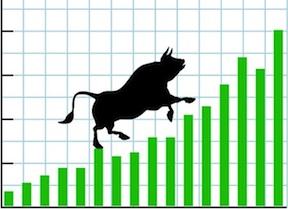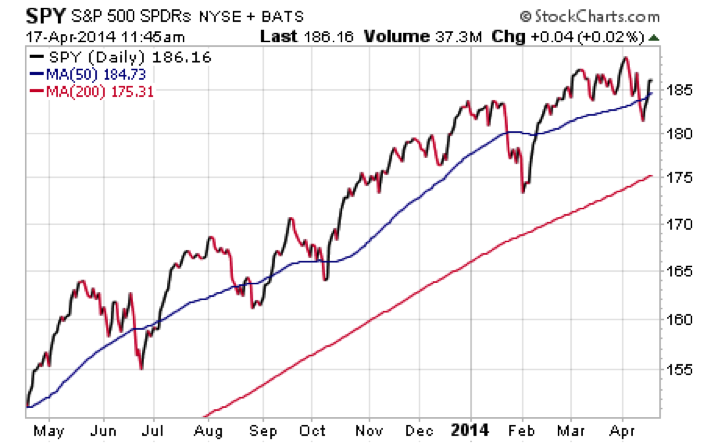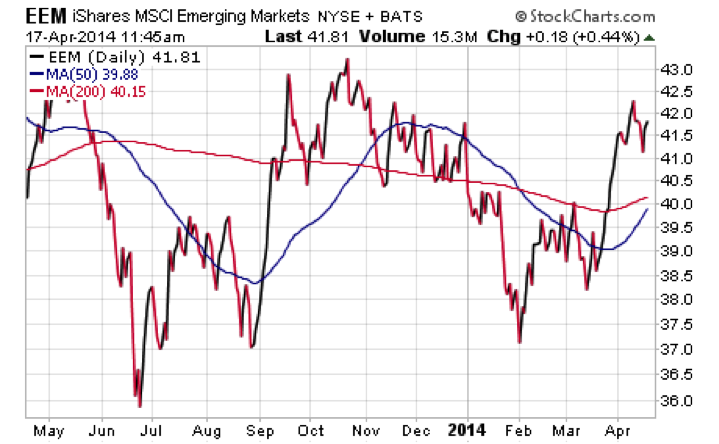 Everyone has a little bit of a different philosophy when it comes to following the market and managing risk. Some believe that a buy-and-hold strategy that completely eliminates timing or risk factors is the way to go. They try to ignore the daily machinations and focus on the long-term big picture. Others find themselves tracking the individual ticks of hundreds of stocks as they try to glean an intra-day edge with their trading strategy.
Everyone has a little bit of a different philosophy when it comes to following the market and managing risk. Some believe that a buy-and-hold strategy that completely eliminates timing or risk factors is the way to go. They try to ignore the daily machinations and focus on the long-term big picture. Others find themselves tracking the individual ticks of hundreds of stocks as they try to glean an intra-day edge with their trading strategy.
I find that my preferred method of investing is rooted in trend following.
More precisely, I tend to focus on the intermediate to longer-term trends of the market. Within this framework, I overlay a risk management approach that includes the use of stop losses or other sell discipline to mitigate double digit declines. This allows me the flexibility to rotate between stocks, bonds, and cash when the conditions are most prevalent to each asset class.
A quick look at a chart of the SPDR S&P 500 ETF (SPY) shows that this large-cap index has been well above its 200-day moving average (red line) for well over a year now. The strength and direction of this chart has been all the evidence I need to maintain a healthy allocation to equities and follow the trend higher.
When the market falls back below the 200-day moving average, I will begin to scale out of some highly appreciated positions or make subtle shifts to my asset allocation strategy. This may include rotating into other asset classes that are performing better or just standing aside in the safety of cash for a period of time.
A trend following strategy works best during long periods of sustained up or down price movement. In a sideways or directionless market, this strategy often falls down because you run the risk of being in or out at the wrong times.
In that scenario, it may make sense to set upper and lower bands on your holdings to give yourself more flexibility for price fluctuations. Another option is to set price targets that will only trigger if the investment breaks out of its consolidation. The iShares MSCI Emerging Market ETF (EEM) is just one example of a chart with a great deal of volatility, flat trend-line, and uncertain direction.
Critics will point out that trend following will lead to whipsaws and other false signals that leave you stranded when the investment reverses course. That is certainly one drawback to this methodology. However, the ultimate goal is to avoid a 2000-2002 or 2008-style bear market that wipes out a significant portion of your wealth.
At the end of the day, there is no perfect investment strategy. Everyone must find a solution that makes sense for their risk tolerance, time horizon, trading experience, and comfort level. For me, it’s trend following. But I also understand that investing requires time, tools, and discipline to implement a successful plan. Therefore, I encourage every participant in the market to frequently seek out new ideas and broaden their knowledge-base by studying others. That way you can incorporate strategies that work to your benefit.
Twitter: @fabiancapital
No position in any of the mentioned securities at the time of publication. Any opinions expressed herein are solely those of the author, and do not in any way represent the views or opinions of any other person or entity.









